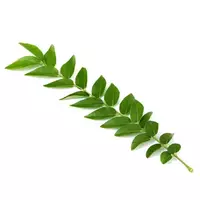Curry leaves

In Asia, curry leaves are considered as common a seasoning as bay leaf for the people of our latitudes. The Murraya tree is paniculate or Murraya foreign (Murraya paniculata) is assigned by scientific classification to the Rutov family. The birthplace of the plant is considered to be the region of Southeast Asia. The curry tree is native to India, Sri Lanka, as well as Thailand, Cambodia, China, Malaysia, Laos, the Philippines and Australia. The curry tree differs in its compact size.
As a rule, the plant rarely reaches more than 6 meters in height. The curry tree blooms in small size but fragrant white inflorescences. It is worth noting that in cooking, and in addition, in folk medicine, not only curry leaves are used, but also the inflorescences of the plant. It is worth emphasizing especially that plant seeds can cause irreparable harm to the health of the human body. This is primarily due to the chemical neighborhood of the seeds of the curry tree.
As it turned out, curry seeds contain toxic compounds that can lead to severe food poisoning. Curry leaves is an English-language and adapted name for the spice, which in India is called mitha-nim or kari-phulia, as well as patta or simply it. It is also noteworthy that curries are called not only spicy leaves used in cooking. Curry is a famous Indian seasoning that consists of a mixture of certain spices, spices and herbs.
In addition, curry is a special type of liquid dishes of national Indian cuisine. In cooking, curry leaves are used mainly for cooking the first, as well as hot vegetable dishes and snacks. Curry leaves give the finished culinary product a pleasant spicy aroma, as well as a "warming" taste. Curry leaves are thought to have the potential to greatly enhance the flavour and aroma bouquet of most soups and hot staples.
It is worth noting that the curry leaves are fresh and exude a strong aroma in which you can catch bright fresh citrus and anise notes. More uniquely, curry tree leaves need to be used immediately after they have been ripped off. The thing is that over time, the plant's distinctive taste and armoate evaporates. In India and Sri Lanka, fresh curry leaves are roasted in traditional ghee melted butter for Indian cuisine until crisp, before adding spice to soups, cereal dishes or vegetables.
In China, curry leaves are often mixed with coconut milk. Curry leaves perfectly shade the taste of seafood. the real gourmet treat could be the royal prawns served under onion, ginger, chilli, coconut milk and, of course, curry leaves.
curry leaves 202.86 kCal
Energy value of curry leaves (Ratio of proteins, fats, carbohydrates - ju):
Proteins: 16.84 g (~ 67 kCal)
Fats: 8.29 g (~ 75 kCal)
Carbohydrates: 17.46 g (~ 70 kCal)
Energy ratio (bj | y): 33% | 37% | 34%
 Español
Español Français
Français Português
Português Русский
Русский 简体中文
简体中文 繁體中文
繁體中文 日本語
日本語 한국어
한국어 العربية
العربية Türkçe
Türkçe Қазақ
Қазақ Deutsch
Deutsch Italiano
Italiano Українська
Українська
